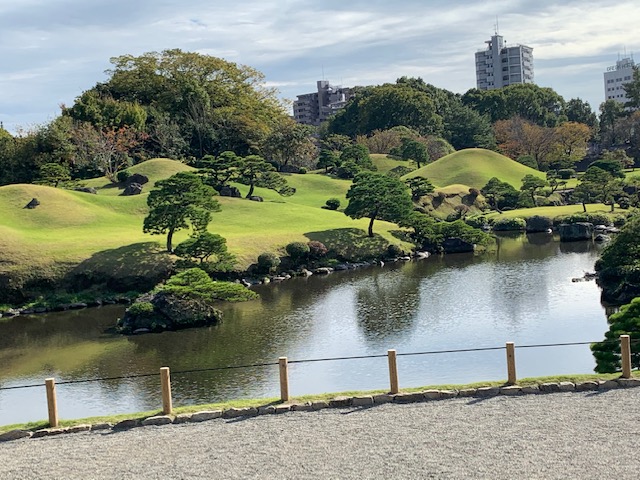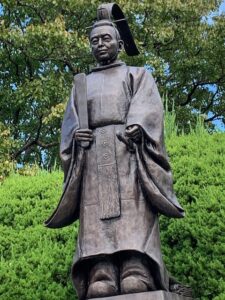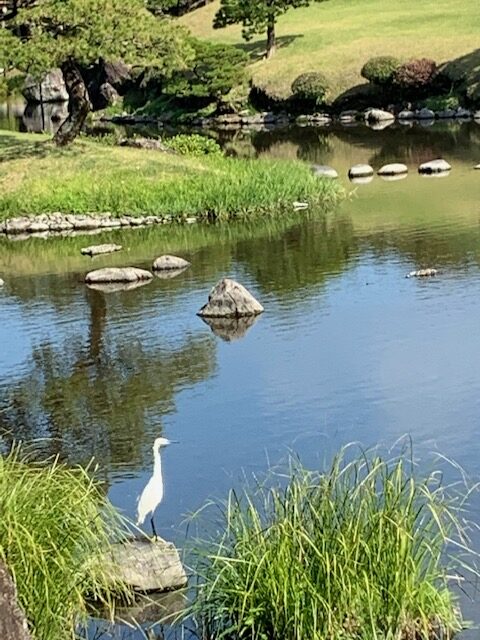This is part of an ongoing series about travelling the length of Japan by train, and consists of passages with a Shinto or spiritual flavour. They are extracted from a longer book version due to be published by Stone Bridge in January 2023.
***********************
In Kumamoto I once again crossed tracks with Alan Booth on his long walk through Japan. We had parted ways at Shimonoseki, and while he strode doggedly down the middle of Kyushu I slow-trained the northwestern coast. As Booth draws nearer his final destination, the descriptions in his book get shorter and shorter, reflecting his urge to reach journey’s end. Beer, hot springs and wild swimming had sustained him, he claims, though humour and intelligence clearly played a part too.
In Kumamoto, as he considered the sprawling earthworks of the massive castle, Booth wrote about the similarities between Japanese and European fortresses. Both have concentric defences, narrowing towards an innermost structure, but with one big difference. Whereas European keeps have massive walls of impenetrable stone, Japanese castles at their core have a palace-like hall made of wood and plaster. The observation suggests the delicacy at the heart of Japanese culture, much as the emperor for long periods lived virtually unprotected in the imperial palace.
Kumamoto’s castle is humongous – no other word quite captures the scale of the fortress. Built in 1607, it was one of the largest in the land, with an outer perimeter of thirteen kilometres. But the castle Booth visited and the one I was viewing were quite different. Very different, in fact. In 2016 a terrifying earthquake laid waste to the fortifications, and the television images from that time – the collapsed rooms, damaged walls and shattered structures – remain imprinted on the mind.
Japan is a land of disasters, and one sometimes forgets the fragility of existence in the archipelago. Floods, earthquakes, typhoons, eruptions and tsunami issue constant reminders of the thin veneer between life and death, as if the gods want to warn against complacency. Even the most robust of human constructs, like the stone walls of Kumamoto Castle, can be casually tossed aside by terrifying powers of unknown origins. It fosters a placatory attitude towards the kami, and a stoic acceptance of adversity. As Donald Richie put it, shikata ga nai (It can’t be helped) is Japan’s national mantra.
Suizen-ji is Kumamoto’s number two attraction, and I had visited it on a previous occasion. Built in the 1630s as a tea retreat, it centred around a spring of fresh water originating in the Aso mountains. Later a stroll garden was laid out to reproduce scenes from the Tokaido, with a lake and Fuji-shaped hill.
Amongst the many features is a larger than life statue of founder, Hosokawa Tadatoshi. Originally there was a temple, now there is a shrine, but tea, water and contemplation remain written into the fabric of the garden.
sacred straw rope
spring water wells up
at Suizen-ji
There is often more to haiku than meets the eye, and in this case the haiku was written by novelist Natsume Soseki, who lived for four years in the city and whose residence is reassembled at Suizen-ji. The haiku he wrote here was sent for feedback to his mentor Shiki Masaoka. A noticeboard at the park says that it was a New Year greeting, with the straw rope (shimenawa) referring to the seasonal decoration that in Shinto delineates sacred space and, as here, a sacred time of year.




